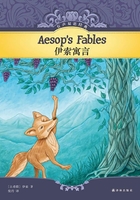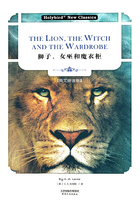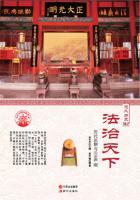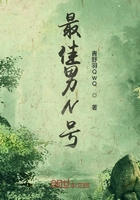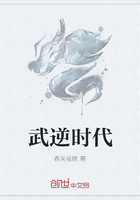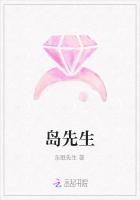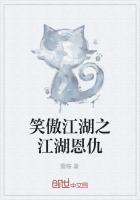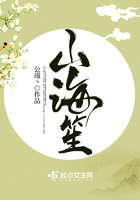The bitterroot(Lewisia Rediviva)was a logical historical choice.In 1805,Meriwether Lewis and William Clark “discovered”the plant in the western Montana valley that now bears its name.
Montana’s Indians used it as an important part of their diet.Tribes timed their spring migrations with the blooming of the bitterroot on the gravel river bars and hillsides(山坡,山腹).Dug,cleaned,and dried,the root provided a lightweight,nutritious(营养的)supplement to a wild-game diet.At major trading centers like The Dalles,the root was an item of barter(物品交换,实物交易)and exchange.A sackful commanded a substantial price-usually a horse.
One ounce of dried root provided sufficient nourishment for a meal,but the plant was seldom eaten raw,for its bitter taste and resultant(作为结果而发生的,合成的)swelling caused great discomfort(不便之处,不适).More traditionally,Indian women boiled the root,then mixed it with meat or berries.Pulverized(.研磨成粉)and seasoned with deer fat and moss,the cooked root could be molded into patties and carried on hunting expeditions or war parties.
With a strong Indian heritage(遗产,继承权)and a name derived from the leader of the Lewis and Clark expedition,the bitterroot was most appropriate as a state symbol.In their contribution to the 1893Columbia Exposition,Butte residents used the flower as the central figure on a large silver shield.That same year,in response to a national WCTU program,Mrs.Mary Long Alderson of Bozeman began efforts to secure legislative designation(指示,指定,选派,名称)for the bitterroot as Montana’s state flower.
Mary Alderson was the heart of the state flower movement in Montana.In January of 1894,she formed and headed Montana’s Floral Emblem Association.County and community committees followed,as did floral meetings in most major cities and towns.The association set a state-wide referendum(公民投票,(外交使节)请示书)for fall.Interested men and women registered in their respective(分别的,各自的)counties.Mrs.Alderson’s committee then sent out a ballot to each registrant(登记者).Ballots had to be completed and returned by September 1,1894.
Montana’s press joined in the effort.Columns described the cause and the floral candidates.Editorials advocated(提倡,鼓吹)this flower or that.When the polls closed,5,857ballots were in.More than 32separate flowers received votes.The winner(with 3,621votes)was the bitterroot,followed by the evening primrose(樱草花,报春花)(787votes)and the wild rose(668).At Mrs.Alderson’s urging,the 1895Legislature responded to public preference and sanctioned the symbol.
Before long the delicate petals of the bitterroot graced stationery stationery(文具,信纸),posters,silverware(银器),and even special sets of double damask
(缎子)Irish linen(亚麻布,亚麻制品).The major credit for the addition of the bitterroot to Montana’s list of official symbols belongs to Mary Long Alderson.
Perennial with flowers that are rose-pink,and 2inches across in May and.June.It has narrow,red-green leaves that form basal rosette(基生莲座叶丛)in early spring.The leaves die back in June.Plants are located from British Colombia to San Bernardino Mtns.to Rocky Mtns.The plant is not alkali tolerant,and needs good drainage(排水,排泄).The peeled,boiled root may be eaten,and the plant protect from birds until established.It is an excellent showy plant at higher elevations or in the East.It has a tendency(趋向,倾向)to rot in the winters at lower elevations because of wet conditions.
Flowers:Bitterroots white to pinkish flowers,each about two inches across appear to be leafless.But the fleshy,one to two inch leaves appear before the flowers in early spring,soon after the snow melts.They wither away by the time the flowers bloom,generally in early June.One flower per scape(花茎,柄节);4to 9sepals;10to 19petals,18to 35mm,white to rose colored;40to 70stamens Blooms:May to June
Leaves:Basal,thick,succulent(多汁的);without margins of flattening(整平,扁率)of top and bottom surfaces;leaves either present at anthesis(开花期,开花)or withering and drying by then
Plant:Perennial[(植物)多年生的].Traditionally the roots were peeled,then cooked and eaten,or dried for future use by the Coeur d’Alene,Kutenai,Okanagon-Coville,Okanagon,Sanpoil,Shuswap,Spokan,and Thompson.
Habitat:Loose gravel and rocky places,sandy ground,granite(花岗岩)or shale([地]页岩,泥板岩),mostly dry soil,sagebrush(山艾树)plains to lower mountains
State Flag州旗
在蓝底州旗单词“Montana”下面,是本州州徽。此州徽展示了蒙大拿州美丽的风景。鹤嘴锄、铲和犁代表采矿业和农业。在背景上太阳从山脉、森林和密苏里河的瀑布后升起来。在缎带上写有本州州言:“金和银”。
Colonel Kessler’s needed a flag or banner to distinguish Montana Volunteers from other units.Colonel Kessler’s Flag embarked for the“Philippine Insurrection(起义)”with the First Montana Infantry(步兵,步兵团)in the fall of 1898,and served as the unit’s chief insignia(勋章,徽章)during its tour of duty.By the time the volunteers returned to a grand State welcome in October of 1899,the Colonel’s(陆军上校,团长)private flag had grown in acceptance and stature.Montana newspapers looked upon the blue banner as an unofficial state flag.The idea of an official state flag appealed to many.The Ninth Legislative Assembly reflected that support in 1905and proclaimed Colonel Kessler’s flag official,deleting(删除)only the words “1st Montana Infantry,U.S.V.”which appeared above the seal.Under the word “Monana”,on a blue field,is the state seal.The seal shows some of Montana’s beautiful scenery and tells what people were doing in pioneer times.The pick,shovel and plow represent mining and farming.In the background a sun rises over mountains,forests and the Great Falls of the Missouri river.A ribbon(缎带,丝带)contains the state motto “Gold and Silver”.
Song of the State州歌
Montana
Tell me of that Treasure State
Story always new,
Tell of its beauties grand
And its hearts so true.
Mountains of sunset(日落,晚年)fire
The land I love the best
Let me grasp the hand of one
From out the golden West.
Montana,Montana,
Glory of the West
Of all the states from coast to coast,
You’re easily the best.
Montana,Montana,
Where skies are always blue
M-O-N-T-A-N-A,
Montana,I love you.
Each country has its flow’r;
Each one plays a part,
Each bloom brings a longing hope
To some lonely heart.
Bitter Root(苦根)to me is dear
Growing in my land
Sing then that glorious(光荣的,显赫的)air

